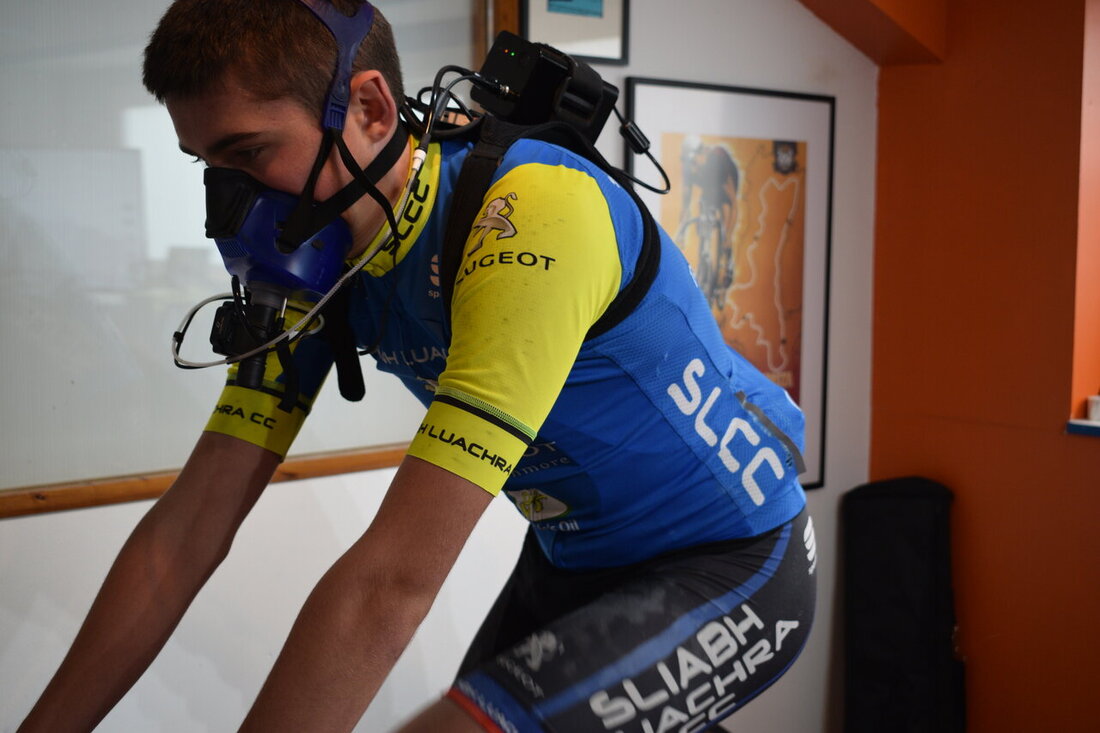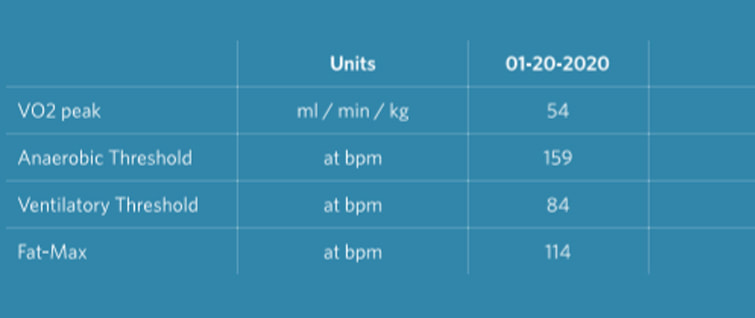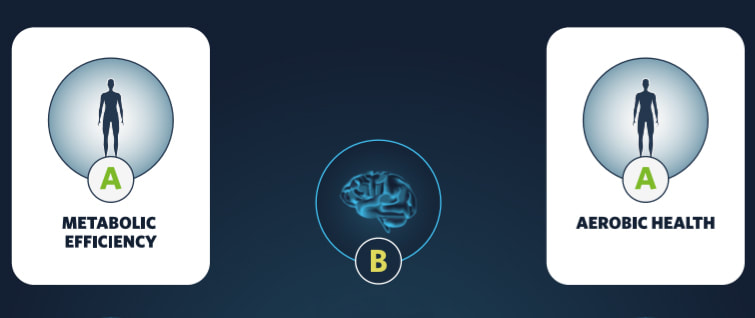Metabolic screening using the PNOE gas analysis portable unit
Vo2 Max Test
Price: €165
|
|
This session takes 60mins, including a spirometry test and the ramp test on a bike or treadmill and comes with a detailed report, training advice and zoom call to discuss the following:
|
|
PNOĒ, now one of the most widely used metabolic analysers, was independently validated by a multicentre committee of experts from Georgetown University in Washington, The Washington DC VA Medical Center, Rutgers University in New Jersey and Harokopio University in Athens, Greece.
The study shows that the PNOĒ metabolic analyzer provides accuracy and reproducibility equivalent to that of the gold standard stationary metabolic cart, the COSMED Quark CPET. This is an established clinical standard in the field of cardio-metabolic testing. Link to validation research study at the bottom of the page. It is used to determine the health of your cardiopulmonary system, since a person’s Vo2peak (highest amount of oxygen consumption in ml per minute per kilogram of body weight during exercise) is very closely linked to cardiovascular health. The test has been shown to be able to detect cardiovascular disease early on. This test will also measure the person’s breathing quality, as we know that hyperventilation effects 10-12% of the population and can lead to a respiratory limitation to reaching your optimal performance potential. Hyperventilation is also associated with dizziness, reduction in clarity and reaction times. It also measures how mechanically efficient a person is at the activity (running/cycling). |
This is something of interest to athletes as they seek to be more mechanically efficient (use less energy for the same work).
The report that is compiled from the test result will analyse the data at each intensity zone of the ramp test and will find the limiting factors that are in play. A limiting factor will be one or a combination of the cardiopulmonary system, the respiratory system or the metabolic system. Once this limiting factor is revealed, you will be given advice on how to improve this limitation by adopting a different exercise strategy.
For example, a common physiological limitation is discovering that the client is not taking in sufficient volumes of air per breath when working at various intensities (we compare these volumes to the client's respiratory capacity using spirometry prior to the fitness test) or that the client is breathing too many/too little times per minute. Both will cause a drop in performance in their exercise/sport.
Hyperventilation can lead to the metaboreflex whereby the body prioritises the overactive diaphragm and moves the majority of blood flow here rather than the working muscles.
Hypoventilation at higher exercise intensities will lead to reduced removal of carbon dioxide, which then sets of a protective cascade led by the brain constricting blood vessels to the legs, reducing blood supply which then causes leg fatigue. I.e a physiological limitation rather than a strength limitation in the legs.
The PNOE gas analysis test will also highlight metabolic inefficiencies at certain exercise intensities : Using VO2/ breathing frequency and VO2/heart rate, the data can show up areas/zones where the client should direct their training to improve efficiency in these areas. In the data graph below, we can see that the cyclist suffers a drop in metabolic efficiency across both metrics when hitting 250watts and 140 beats per minute. This happens to be within the cyclist's zone 4 training zone, based on the results of his test. To address this inefficiency, he was given training advice to target this heart rate/power for his zone 4 interval session in the week.
The report that is compiled from the test result will analyse the data at each intensity zone of the ramp test and will find the limiting factors that are in play. A limiting factor will be one or a combination of the cardiopulmonary system, the respiratory system or the metabolic system. Once this limiting factor is revealed, you will be given advice on how to improve this limitation by adopting a different exercise strategy.
For example, a common physiological limitation is discovering that the client is not taking in sufficient volumes of air per breath when working at various intensities (we compare these volumes to the client's respiratory capacity using spirometry prior to the fitness test) or that the client is breathing too many/too little times per minute. Both will cause a drop in performance in their exercise/sport.
Hyperventilation can lead to the metaboreflex whereby the body prioritises the overactive diaphragm and moves the majority of blood flow here rather than the working muscles.
Hypoventilation at higher exercise intensities will lead to reduced removal of carbon dioxide, which then sets of a protective cascade led by the brain constricting blood vessels to the legs, reducing blood supply which then causes leg fatigue. I.e a physiological limitation rather than a strength limitation in the legs.
The PNOE gas analysis test will also highlight metabolic inefficiencies at certain exercise intensities : Using VO2/ breathing frequency and VO2/heart rate, the data can show up areas/zones where the client should direct their training to improve efficiency in these areas. In the data graph below, we can see that the cyclist suffers a drop in metabolic efficiency across both metrics when hitting 250watts and 140 beats per minute. This happens to be within the cyclist's zone 4 training zone, based on the results of his test. To address this inefficiency, he was given training advice to target this heart rate/power for his zone 4 interval session in the week.
It can also be used to determine calorie requirements : Using the PNOE over an endurance test (lasting 50mins) will allow us to tell the calorie expenditure and carbs / fat usage at various exercise intensities, very useful info for race day nutrition planning.
An insight into the data
Have a look here at a discussion between myself and a client around the data following his VO2 Max tests on the treadmill and on the bike. Very interesting to see the contrast between the two disciplines and also just to see the depth of data and information captured by PNOE metabolic gas analysis.
Read sample report
| pnoe-fitness-report-24feb-2.pdf | |
| File Size: | 2261 kb |
| File Type: | |
Athletes use metabolic analysis to accurately determine their heart rate and/or power zones. It is widely known that working at specific zones through using adequate intervals rather than always working at full intensity or always working at low intensities is of benefit to the individual, in order to challenge the different energy systems of the body and address any metabolic inefficiencies found on testing.
Other metrics examined
RESPIRATORY FITNESS
This metric describes how well conditioned the lungs are and if they pose a
limitation to the ability to workout. The value of this metric is based upon your
VO2peak as well as the trendline of the amount of oxygen your lungs pump into
your body per breathing cycle (VO2/BF) as intensity increases. A low VO2peak in
combination with a flattening of VO2/BF early on during the exercise will reduce
the score of this metric. Sedentary lifestyle and lack of cardiovascular exercise or
excessive weight training will lower the score of this metric. HIIT and Cardio
training will improve it.
METABOLIC EFFICIENCY
This metric is a gauge of caloric burn during movement and whether one is
burning more or less calories than the average person of the same age, gender,
and weight. This metric does not provide an indication of how high or low resting
metabolic rate is. The value of this metric is based on mechanical efficiency
recorded during the initial stages of the protocol. Caloric restriction, chronic
dieting and excessive cardio training are among the most common factors that
reduce the value of this metric. Strength training in combination with refeeding
cycles will improve the score of this metric
AEROBIC HEALTH
This metric is a gauge of the ability to workout at high exercise intensities, which
helps burn more calories. Aerobic health is also a strong indicator of overall
health and the likelihood of developing cardiovascular disease. The value of this
metric is based on VO2peak. Sedentary lifestyle and lack of cardiovascular
exercise or excessive weight training will lower this score. HIIT and Cardio
training will improve the score of this metric.
FAT BURNING EFFICIENCY
This metric is a measure of the mitochondria's’ ability to utilize oxygen and burn
fat as a fuel source. Fat burning efficiency is highly correlated with cellular health.
The value of this metric is based on the heart rate at which you attain the
crossover point in relationship with the maximum and starting heart rate during
the test. Sedentary lifestyle and lack of cardiovascular exercise or excessive
weight training will lower the score of this metric. Low to medium intensity cardio
training in zones 2 and 3 will help you improve it.
This metric describes how well conditioned the lungs are and if they pose a
limitation to the ability to workout. The value of this metric is based upon your
VO2peak as well as the trendline of the amount of oxygen your lungs pump into
your body per breathing cycle (VO2/BF) as intensity increases. A low VO2peak in
combination with a flattening of VO2/BF early on during the exercise will reduce
the score of this metric. Sedentary lifestyle and lack of cardiovascular exercise or
excessive weight training will lower the score of this metric. HIIT and Cardio
training will improve it.
METABOLIC EFFICIENCY
This metric is a gauge of caloric burn during movement and whether one is
burning more or less calories than the average person of the same age, gender,
and weight. This metric does not provide an indication of how high or low resting
metabolic rate is. The value of this metric is based on mechanical efficiency
recorded during the initial stages of the protocol. Caloric restriction, chronic
dieting and excessive cardio training are among the most common factors that
reduce the value of this metric. Strength training in combination with refeeding
cycles will improve the score of this metric
AEROBIC HEALTH
This metric is a gauge of the ability to workout at high exercise intensities, which
helps burn more calories. Aerobic health is also a strong indicator of overall
health and the likelihood of developing cardiovascular disease. The value of this
metric is based on VO2peak. Sedentary lifestyle and lack of cardiovascular
exercise or excessive weight training will lower this score. HIIT and Cardio
training will improve the score of this metric.
FAT BURNING EFFICIENCY
This metric is a measure of the mitochondria's’ ability to utilize oxygen and burn
fat as a fuel source. Fat burning efficiency is highly correlated with cellular health.
The value of this metric is based on the heart rate at which you attain the
crossover point in relationship with the maximum and starting heart rate during
the test. Sedentary lifestyle and lack of cardiovascular exercise or excessive
weight training will lower the score of this metric. Low to medium intensity cardio
training in zones 2 and 3 will help you improve it.
Validation research study
| pnoe.validation.study.pdf | |
| File Size: | 648 kb |
| File Type: | |
Testing packages available
Initial VO2Max ramp test plus a retest at 8-10 weeks : €300
Initial VO2Max ramp test plus 2 follow up tests : €430
Initial VO2Max ramp test plus 2 follow up tests : €430
Pre test day forms to fill out
| prep_info_before_your_metabolic_tests.docx | |
| File Size: | 23 kb |
| File Type: | docx |
| par-q_adults_medical_clearance_form.doc | |
| File Size: | 41 kb |
| File Type: | doc |
| training_history_questionnaire.docx | |
| File Size: | 867 kb |
| File Type: | docx |




